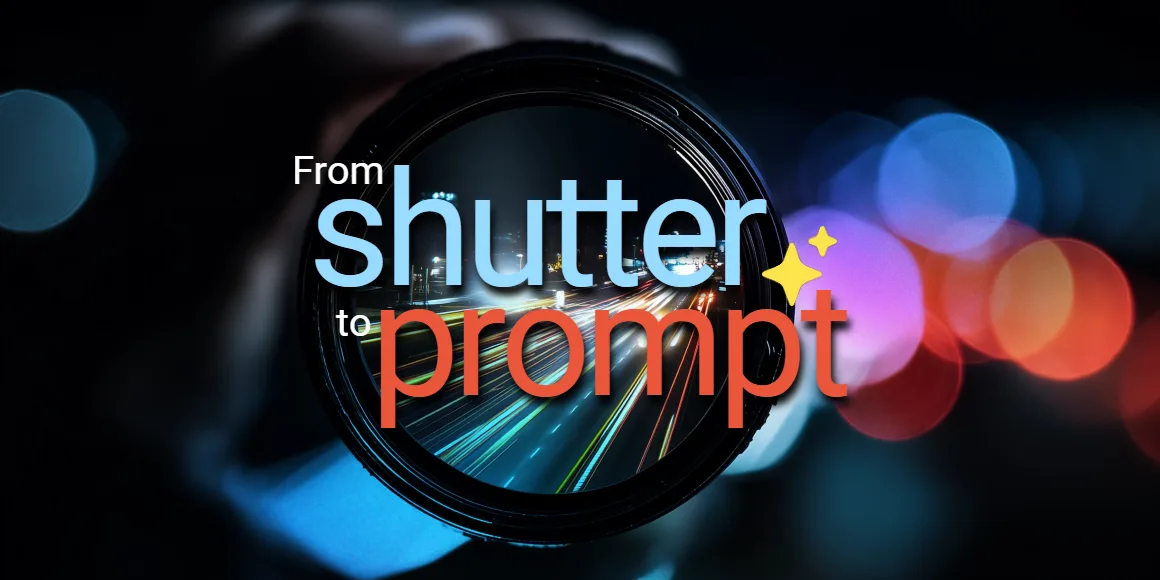From shutter to prompt – How Pixlr is redefining creativity on World Photography Day
For over a century, photography has been defined by the click of a shutter. But today, that’s changing. The art of creating images is being transformed by the power of words, allowing anyone to generate stunning visuals with just a few descriptive sentences.
Pixlr’s AI Image Generator is leading this transformation, enabling users to bring their imagination to life through text-based prompts. With Pixlr, anyone can create high-quality images based on vision, not technical skill.
This World Photography Day, explore the future of creative photography, powered by AI and inspired by your imagination. Put down the lens and pick up your keyboard to unlock a new era of creativity.
A new era in visual storytelling
Photography has always been more than just a technical process—it’s a way to capture moments, tell stories, and preserve memories. But how we take those photos has changed dramatically over time. From the early days of film to the rise of digital cameras and now the emergence of AI-powered tools like Pixlr’s AI Image Generator, each stage in this journey has made visual storytelling more accessible, powerful, and creative.
Let’s explore how photography evolved from a complex craft into an everyday tool—and how artificial intelligence is now ushering in a new era where the prompt becomes the new shutter.
The legacy of the shutter
The story of photography begins in the early 19th century with the invention of the camera obscura and the first permanent photograph by Joseph Nicéphore Niépce in 1826. Back then, taking a photo was a slow, meticulous process that required specialized knowledge, expensive equipment, and hours of exposure.
As technology advanced, so did accessibility. The introduction of roll film by Kodak in the late 1800s allowed more people to take pictures without needing chemical expertise. Then came the digital revolution in the late 20th century, which removed the cost of film and gave photographers instant feedback on their shots.
Each innovation lowered the barriers to entry. What once required a darkroom and technical mastery could now be done with a point-and-shoot camera—or even a smartphone. This shift democratized photography, making it possible for millions of people to become creators.
But even with these advancements, photography still relied on capturing what already existed—light, objects, people, and scenes. Until now.
Enter the age of the prompt
Today, artificial intelligence is redefining what it means to “take” a photo. Tools like Pixlr’s AI Image Generator allow users to create images not by pointing a camera at something real, but by describing what they want to see. In other words, the prompt is becoming the new shutter.
This might sound futuristic, but it’s actually a familiar pattern. Just as early photography was once seen as a mechanical threat to traditional art forms like painting, today’s AI-generated images are raising similar questions about creativity and authorship.
As noted in a thought-provoking article on Medium titled “AI Is a Modern Echo of Photography’s Revolution,” every major technological advancement in image-making has initially faced skepticism before being embraced as a legitimate form of expression. AI is no different—it’s simply the next step in evolution.
Even the New York Times has weighed in on this transformation, stating in its 2023 piece “AI and the Future of Photography” . In this new world, anyone can generate stunning visuals using descriptive text. You don’t need lighting gear, a model, or a studio. All you need is an idea and the right tools. And that’s where Pixlr comes in.
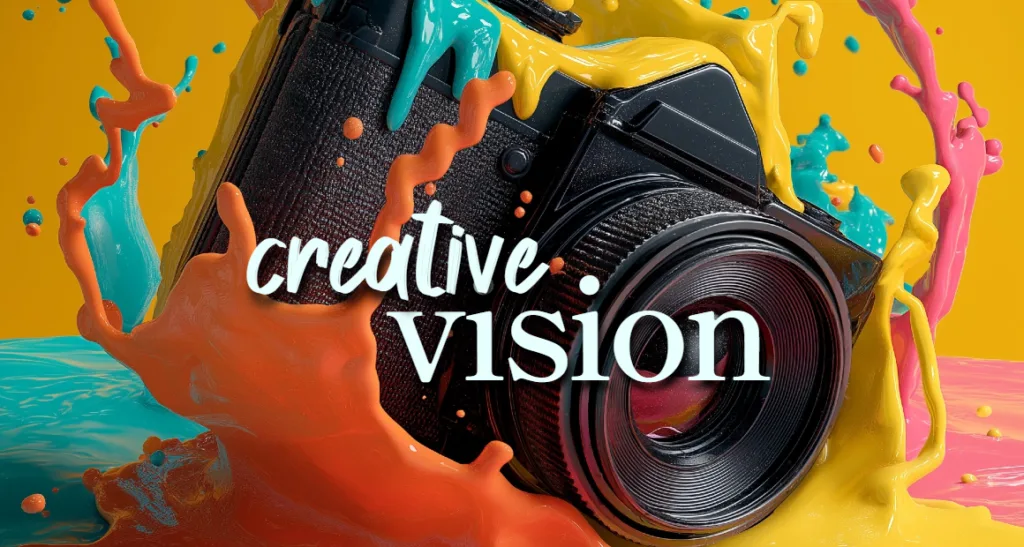
Why vision matters more than gear in 2025
For decades, photography has been associated with expensive cameras, complex settings, and technical mastery. High-end gear and in-depth knowledge of exposure, lighting, and composition were seen as prerequisites for creating professional-quality images. This created a form of gatekeeping, limiting who could participate in visual storytelling and often excluding those without access to costly equipment or formal training.
However, this is changing rapidly. With the rise of artificial intelligence, creativity is no longer defined by what you own or what you know; it’s about what you imagine. AI-powered tools like Pixlr’s AI Image Generator are removing traditional barriers, enabling anyone with an idea to create compelling visuals using just words.
This shift doesn’t mark the end of photography as we know it. Instead, it signals the beginning of a new era where conceptual vision takes precedence over technical skill, and everyone can become a creator.
Technical skill vs. Conceptual vision
In the past, mastering photography required a deep understanding of technical details such as ISO, aperture, shutter speed, white balance, and many others. While this knowledge still holds value for traditional photographers, today’s AI tools are changing the game.
Instead of focusing on camera specs or lens quality, creators now prioritize prompt engineering, crafting descriptive language that guides AI to generate stunning, realistic, or imaginative images. Whether you’re envisioning a futuristic cityscape, a historical scene, or a product shot, your ability to articulate your vision becomes your most powerful tool.
This evolution reflects broader trends in digital creativity. Just as smartphones made photography accessible to billions, AI is now making high-quality image creation available to anyone with a browser and an idea.
Everyone can be a photographer with words
AI is not replacing photographers. It is expanding the definition of who gets to be one. Today, educators can generate custom illustrations for lesson plans. Small business owners can visualize products before they are manufactured. Social media creators can design unique content without hiring a photographer or renting studio space. Even aspiring artists with no prior experience can bring their dreams to life.
Adobe echoed this sentiment in its 2024 article “When Photography Meets Purpose, Real Change Happens,” emphasizing that powerful visual storytelling doesn’t always require a camera—it requires a message. With AI, creators can now produce impactful imagery that supports causes, conveys emotions, and sparks conversations regardless of their technical background.
This is purpose-driven photography reimagined for the digital age. It is less about the mechanics of image capture and more about the meaning behind the image itself.
Whether you are designing a campaign for climate action, crafting educational visuals, or launching a personal art project, AI tools give you the freedom to create without limits.This is more than just innovation; it is empowerment.
How Pixlr empowers the next generation of creators
As photography continues to evolve, Pixlr stands out for its ability to blend cutting-edge AI with intuitive design. More than just an image editor, Pixlr has become a go-to tool for creators who want to generate, edit, and enhance visuals seamlessly within a single interface.
With the launch of Pixlr’s AI Image Generator, the platform has redefined what it means to create visual content in 2025. Pixlr offers powerful tools that make high-quality image creation accessible to all, with three modes: Fast, Pro, and Ultra. Each mode has its own advantages, from quick image creation to advanced features and unparalleled flexibility.
Pixlr’s AI Image Generator is at the heart of its innovation, enabling users to transform descriptive text into stunning, photorealistic images. This tool is powered by advanced generative AI models that support text-to-image generation, and is fully integrated into Pixlr’s editing experience.On World Photography Day, we celebrate creativity in all its forms, not just technical excellence. With Pixlr’s AI Image Generator, anyone can participate in visual storytelling, regardless of their equipment or skill level.
A guide to writing better prompts
As AI reshapes how we create visuals, prompt engineering has become an essential skill for modern creators. Your ability to describe what you want in clear, vivid language can make all the difference between a generic image and a stunning masterpiece. In this section, we’ll break down how prompts work, why they matter, and how you can write better ones to generate high-quality, creative, and emotionally resonant images.
How to Write Effective Prompts for AI Photography
A prompt is simply a descriptive sentence or paragraph that tells an AI system what kind of image you want to generate. The quality of your output will largely depend on how clearly and creatively you express your idea. Mastering the art of prompt engineering is key to unlocking the full potential of AI-generated images.
To get started, consider these foundational strategies:
First, aim for specificity. Vague descriptions like “a beach” or “a portrait” may work, but they rarely yield the best results. Instead, add layers of detail such as lighting conditions (“golden hour,” “studio lighting,” “candlelit”), mood (“joyful,” “peaceful,” “mysterious”), color schemes (“warm tones,” “monochrome,” “vibrant colors”), and composition (“wide-angle shot,” “portrait view,” “macro close-up”). These extra descriptors give the AI more context, helping it visualize exactly what you have in mind.
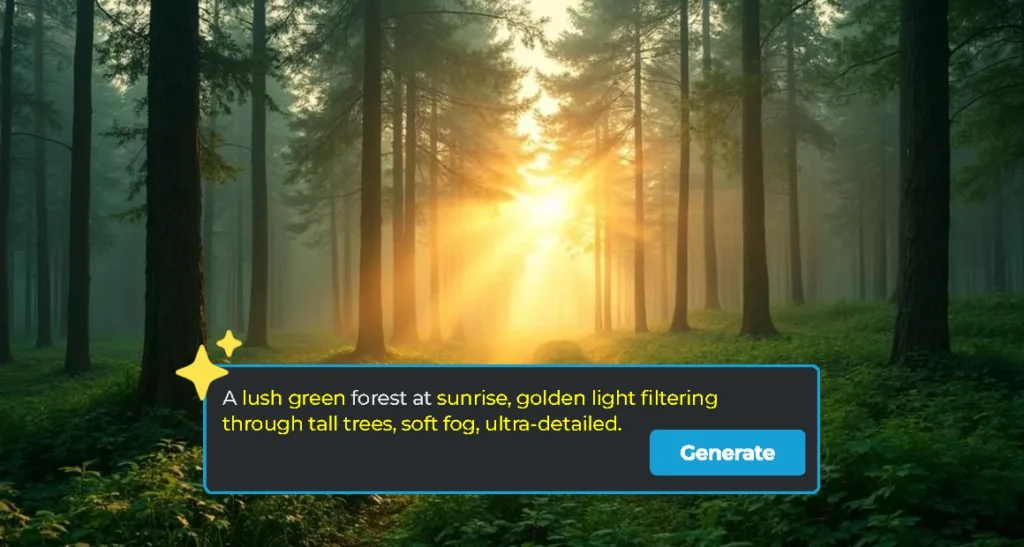
Next, focus on descriptive language. Rather than typing “a forest,” try something like:
“A lush green forest at sunrise, golden light filtering through tall trees, soft fog, ultra-detailed.”
That extra effort pays off in richer textures, more accurate lighting, and overall higher-quality visuals. Another effective technique is to add narrative context. Think of your prompt as a short story rather than just a list of elements. For instance:
Time of day: “Morning,” “nighttime,” “golden hour”
Location: “In a city park,” “on a mountain trail”
Emotional tone: “Nostalgic,” “hopeful,” “haunting”
These contextual clues help the AI understand not just what to show, but how to feel.
You can also guide the aesthetic direction by including style references. Want a cinematic look? A vintage feel? Hyper-realistic detail? Just say so:
“Cinematic lighting”
“Vintage Polaroid style”
“Hyper-realistic portrait”
“Digital art illustration”
For even more control, reference famous artists or photography styles:
“Portrait in the style of Ansel Adams”
“Cityscape with Edward Hopper vibes”
Sometimes, what you don’t want matters just as much as what you do. That’s where negative prompts come in handy. Use them to exclude unwanted elements:
“No blur”
“No watermark”
“No extra limbs”
“No text or logo”
Finally, remember that prompt writing is an iterative process. Don’t be afraid to experiment with different word choices, structures, and levels of detail until you achieve the desired outcome. Like any skill, the more you practice, the better you’ll become at translating ideas into stunning visuals.
Mastering the art of prompt writing
Now that we’ve covered the basics, let’s explore some practical examples you can use or adapt to create striking visuals across various categories. These templates are designed to work especially well with Pixlr’s AI Image Generator, ensuring high-quality outputs whether you’re using Fast, Pro, or Ultra mode.
NATURE
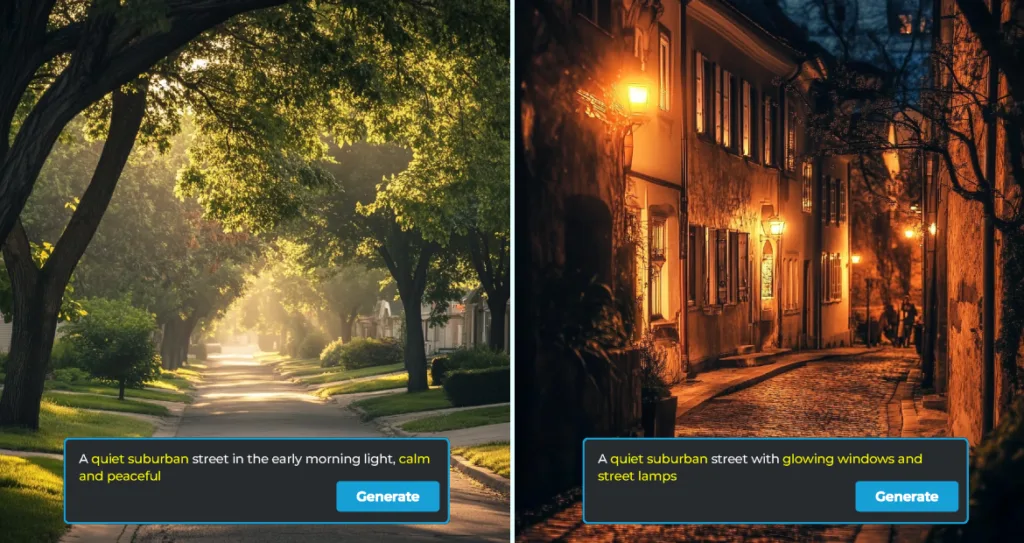
Sample prompt 1: A desert landscape under a stormy sky, red sand dunes, dramatic lighting.
Sample prompt 2: A serene lake surrounded by pine trees, early morning mist, soft sunlight.
PEOPLE
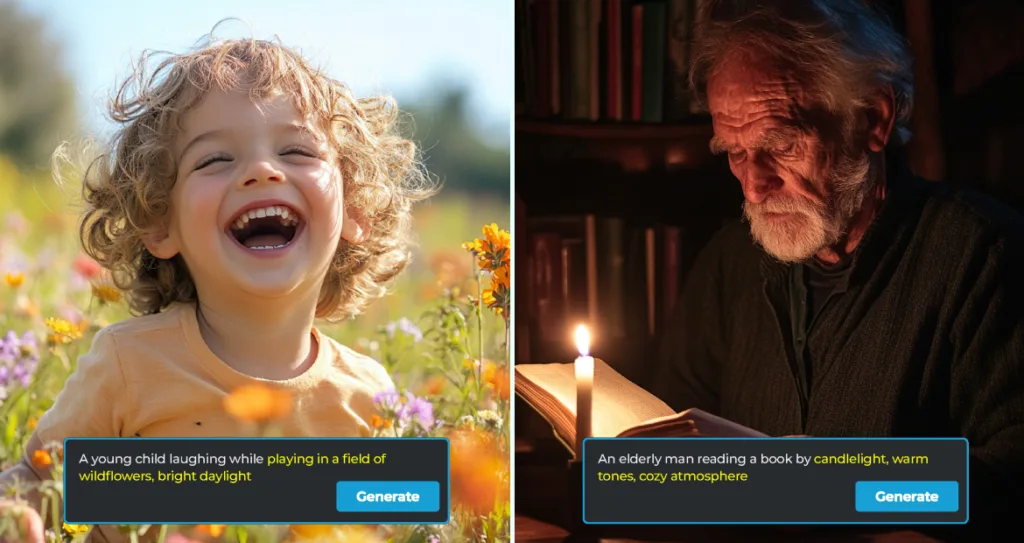
Sample prompt 1: A young child laughing while playing in a field of wildflowers, bright daylight
Sample prompt 2: An elderly man reading a book by candlelight, warm tones, cozy atmosphere
CULTURE
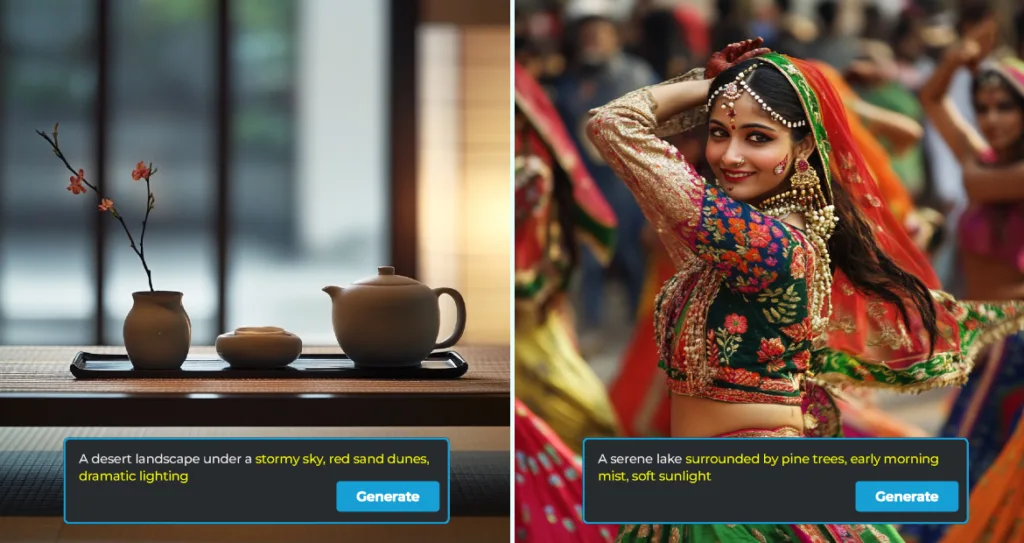
Sample prompt 1: Traditional Japanese tea ceremony indoors, soft lighting, minimalistic decor
Sample prompt 2: Festival dancers in India wearing traditional attire, dynamic movement, festive background
PRODUCT
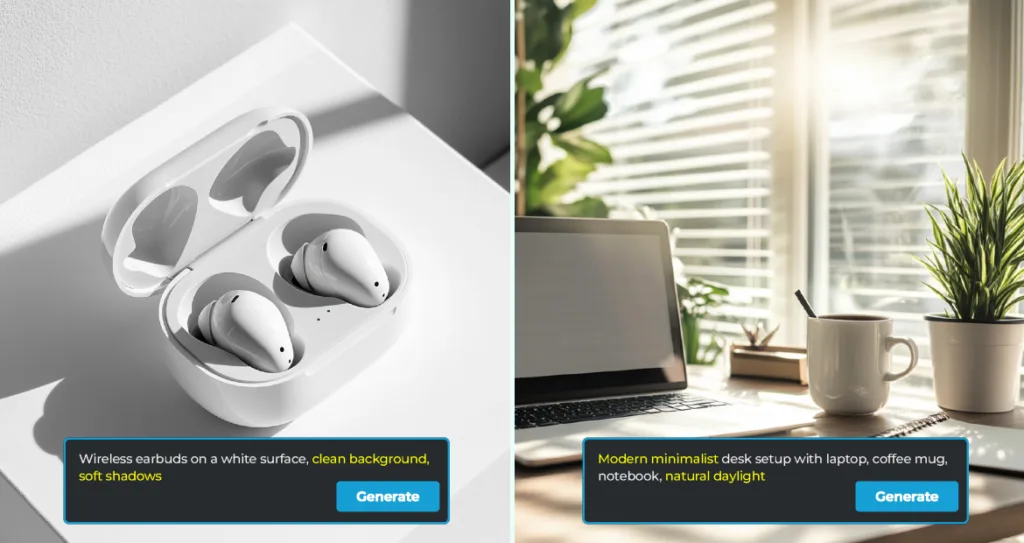
Sample prompt 1: Wireless earbuds on a white surface, clean background, soft shadows
Sample prompt 2: Modern minimalist desk setup with laptop, coffee mug, notebook, natural daylight
STUDIO vs OUTDOOR
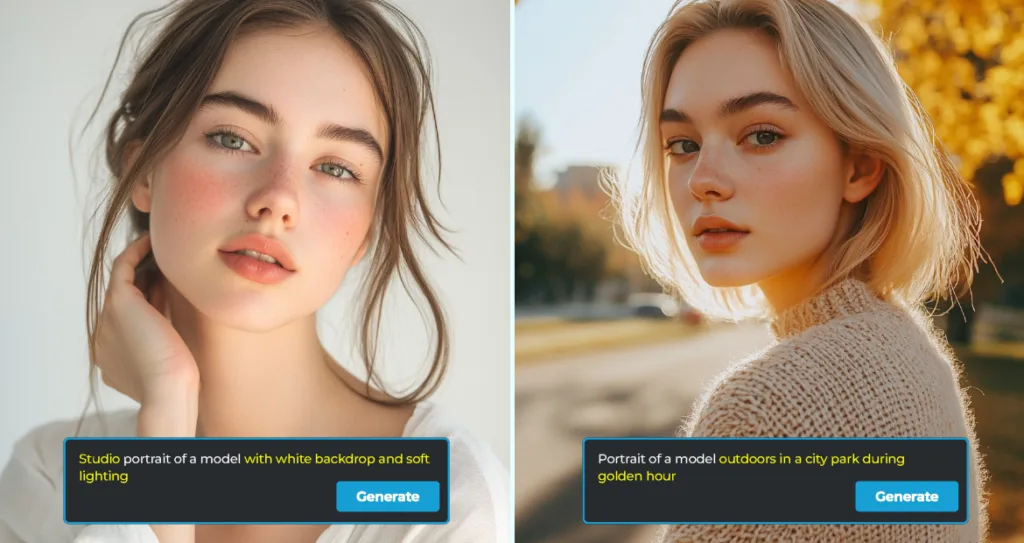
Sample prompt 1: Studio portrait of a model with white backdrop and soft lighting
Sample prompt 2: Portrait of a model outdoors in a city park during golden hour
DAY VS NIGHT
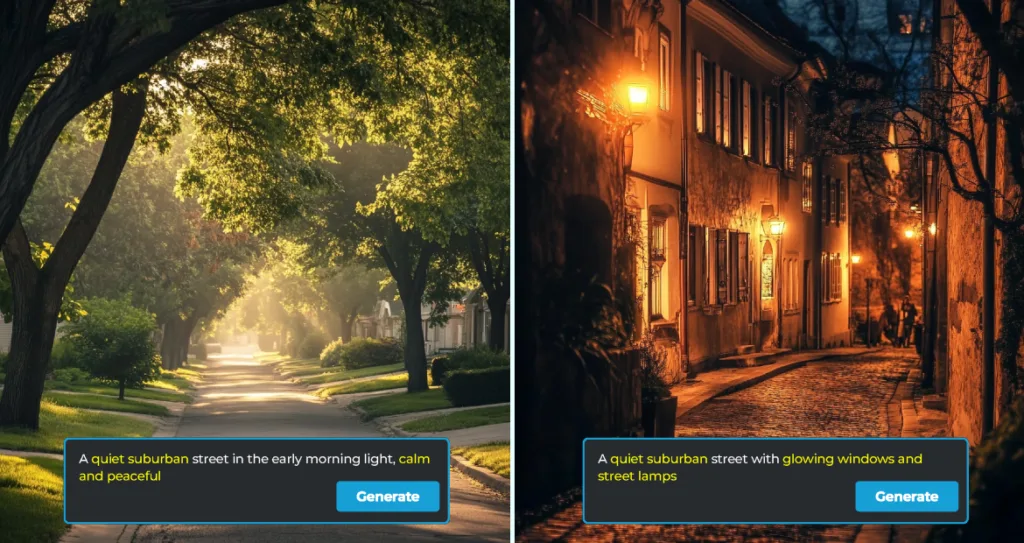
Sample prompt 1: A quiet suburban street in the early morning light, calm and peaceful
Sample prompt 2: A quiet suburban street with glowing windows and street lamps
These examples serve as excellent starting points, but don’t be afraid to mix and match elements or tweak the phrasing to suit your unique vision. Remember, the goal isn’t just to describe a scene, it’s to communicate the emotion, texture, and atmosphere you want to capture.
How to Improve Your Prompt Writing Skills
Try different artistic styles : “Photorealistic”, “Cinematic”, “Watercolor”, “Digital Art”
Use negative prompts to refine results: e.g., “no blur, no watermark, no extra limbs”
Iterate often : Experiment with word choice, structure, and descriptive depth
By mastering these techniques, you’ll be able to consistently generate AI images that align with your vision and stand out from the crowd. Whether you’re creating content for social media, marketing materials, personal projects, or educational resources, Pixlr’s AI Image Generator gives you the tools to bring your imagination to life.
Telling Stories Without a Lens – The New Forms of Visual Expression
In the past, photography was limited by what could be seen through a lens—what existed in front of the camera at a specific time and place. But today, with AI tools like Pixlr’s AI Image Generator , that boundary has disappeared. We are now entering a new era of visual storytelling without physical constraints, where imagination fuels creation and creators can build entire worlds from words.
This shift opens up exciting possibilities and not just for entertainment or art, but for meaningful communication across industries. Whether it’s raising awareness about climate change, educating students on history, or crafting brand campaigns around abstract values like trust and innovation, AI-powered image generation allows us to visualize the unseen and tell stories that matter.
Let’s explore how.
AI-Powered Storytelling with Pixlr
With tools like Pixlr’s AI Image Generator , creators are no longer confined to capturing real-world scenes. Instead, they can generate visuals that depict ideas, emotions, and hypothetical situations with stunning realism.
For example:
- An environmental campaign might use AI to show endangered species thriving in restored habitats—offering a hopeful vision of conservation success.
- A science fiction author could illustrate book covers or concept art using descriptive prompts instead of hiring illustrators or relying on stock images.
- A game developer might rapidly prototype character designs, environments, or storyboards without needing a full art team.
These imagined worlds aren’t just creative exercises—they’re powerful tools for communication, helping audiences connect with ideas that may not yet exist or may never exist in the real world.
And because Pixlr supports advanced prompt engineering and high-quality output modes like Ultra, users can maintain artistic control while achieving professional-grade results.
Creating Meaningful Content with AI Photography Tools
AI-generated imagery isn’t only for fantasy or fun—it can also serve a higher purpose. In fact, impactful visual storytelling doesn’t always require a camera. It requires a message. Here are a few ways Pixlr’s AI Image Generator is being used to support purpose-driven creativity:
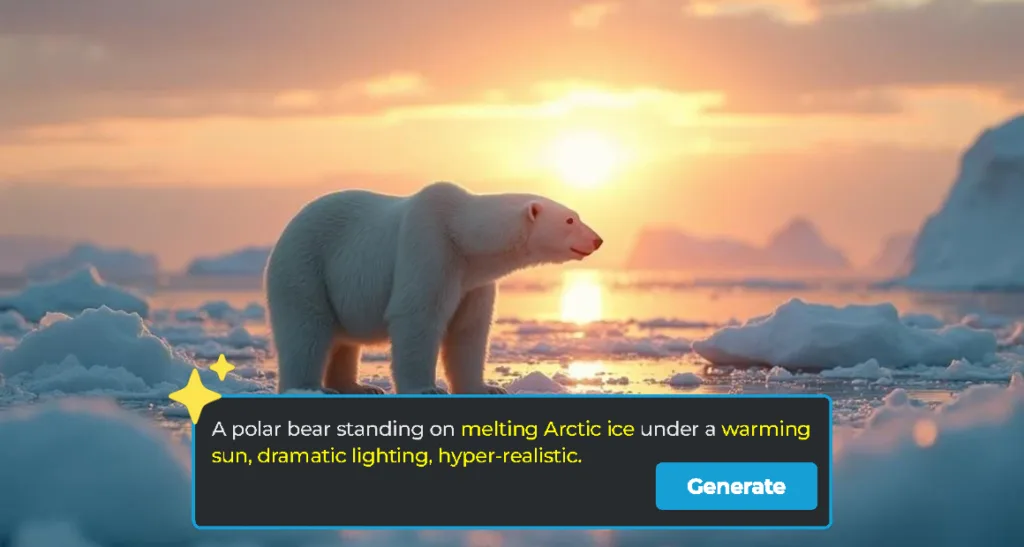
Environmental Awareness
Organizations focused on sustainability can use AI to generate visuals of endangered ecosystems or extinct animals brought back to life in digital form. For instance:
Sample prompt: A polar bear standing on melting Arctic ice under a warming sun, dramatic lighting, hyper-realistic.Such visuals help communicate urgency and empathy more effectively than data alone.
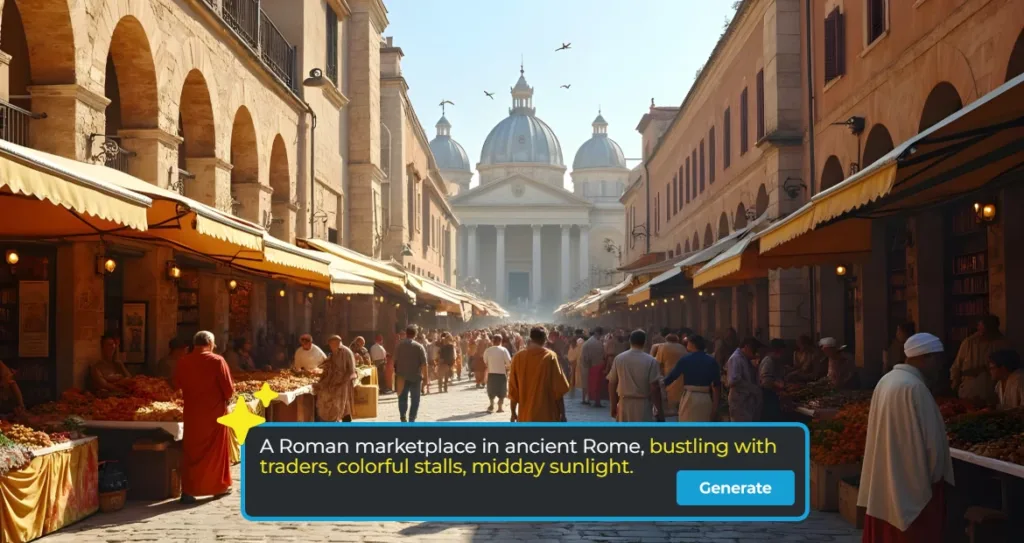
Educational Innovation
Teachers and curriculum designers can bring historical events or scientific concepts to life—even when real images don’t exist. Imagine showing students:
Sample prompt: A Roman marketplace in ancient Rome, bustling with traders, colorful stalls, midday sunlight.
These visuals make learning more engaging and immersive, especially for younger audiences or visual learners.
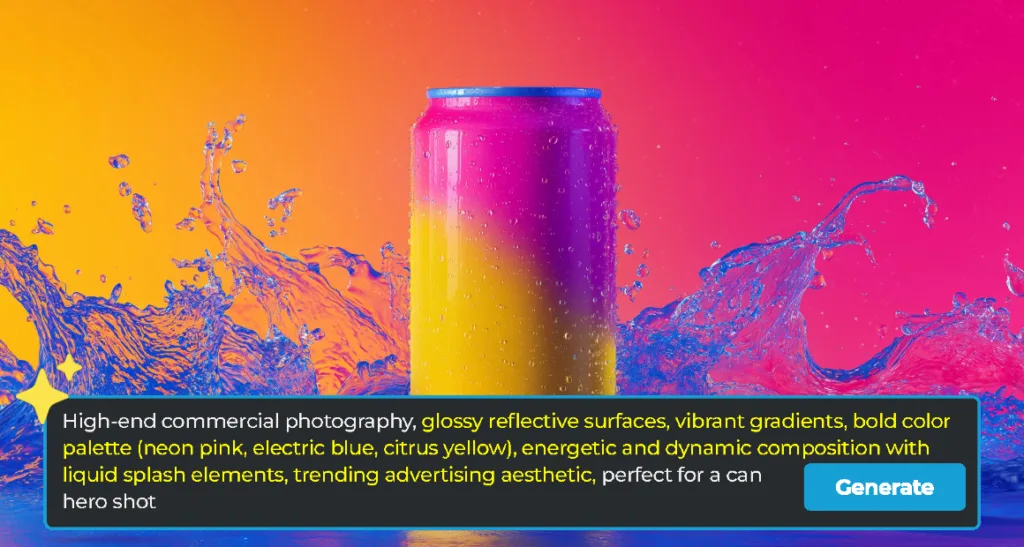
Brand Messaging & Marketing
Brands often need to convey intangible values like trust, innovation, or growth. AI makes it possible to create symbolic imagery that represents these ideals:
Sample prompt: High-end commercial photography, glossy reflective surfaces, vibrant gradients, bold color palette (neon pink, electric blue, citrus yellow), energetic and dynamic composition with liquid splash elements, trending advertising aesthetic, perfect for a can hero shot
These visuals allow marketers to align their messaging with strong, emotive imagery—without the need for complex shoots or expensive photo sessions.
By offering this level of flexibility and emotional depth, Pixlr transcends its role as an image generator, becoming a powerful storytelling platform that empowers educators, activists, and brands to create with intent and communicate with impact.
Rethinking World Photography Day in 2025
This World Photography Day, it’s time to rethink what it means to be a photographer. With AI tools like Pixlr’s AI Image Generator, anyone can become a storyteller today regardless of gear, location, or experience level. Whether you’re visualizing a lost civilization, imagining a future city, or crafting a digital self-portrait, AI photography tools are making visual storytelling more inclusive than ever before.
The future of photography is inclusive, accessible, and powered by AI
Photography has always been about capturing light, moments, and meaning. But now, thanks to AI-generated imagery, it’s also about capturing ideas. The evolution from shutter to prompt is not replacing photographers—it’s expanding who gets to be one. With Pixlr’s AI Image Generator, anyone can tell stories visually without limits. Because the future of photography isn’t just about cameras anymore. It’s about concepts. It’s about purpose. And most importantly, it’s about you.
